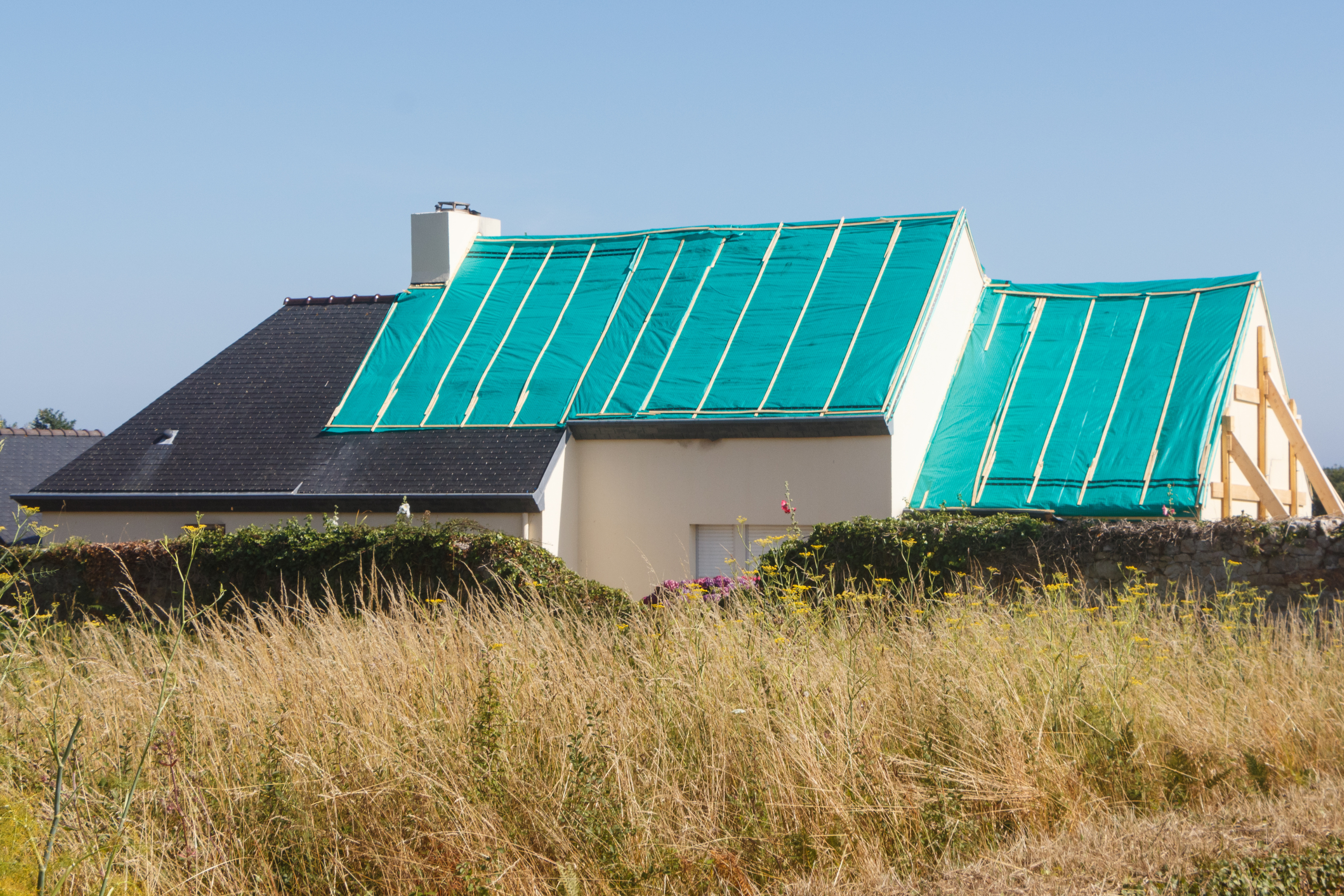Emergency Roof Tarping: What You Need to Know
Need emergency roof tarping? Learn what to expect, timelines, and why hiring a roofer on ServiceSeeking is the best step after storm damage.

Storms and fallen branches can damage your roof without warning, letting water leak inside and causing further damage to your ceilings, walls, and belongings. Emergency roof tarping is a fast, temporary fix that helps protect your home while you wait for full repairs.
Here’s what homeowners need to know about emergency roof tarping and what to expect when hiring a roofer for this service.
What Is Emergency Roof Tarping?
Emergency roof tarping is when a heavy-duty tarp is secured over damaged sections of your roof to prevent water from entering your home. Roofers typically wrap the tarp around timber planks like 1x3 or 2x4, screwing them into place so the tarp stays put during wind and rain.
This allows rain to shed off the roof without pooling, helping prevent additional leaks and mould growth inside your property.
When Do You Need It?
You’ll need emergency roof tarping if:
-
Your roof has storm or tree damage
-
Tiles or sections of Colorbond have been dislodged
-
You see water stains or active leaks inside your home
-
You’re waiting for insurance approvals or a full roof replacement
If your property is part of a strata complex, the manager usually arranges emergency tarping while quotes and insurance claims are processed. However, if delays occur, it’s worth following up to prevent water damage to your unit.
How Long Does Tarping Last?
A professionally installed tarp can last several weeks to months, depending on the weather and the damage underneath. It is not a permanent repair, but it buys time to organise quotes, insurance approvals, and the full repair or roof replacement.
What Is the Process?
-
Assessment: The roofer inspects the damage and determines the best placement for the tarp.
-
Preparation: The area is cleared of debris, and the tarp is cut to size.
-
Installation: The tarp is secured around timber planks and screwed into the roof structure. Roofers ensure water can drain away, avoiding pooling under the tarp.
-
Follow-Up: The roofer may provide you with photos and a plan for permanent repairs.
Costs of Emergency Roof Tarping
Costs vary depending on the size of the tarp required and the difficulty of the installation. Factors that may affect pricing include:
-
Roof height and pitch
-
Extent of storm damage
-
Accessibility for the roofer
-
Weather conditions during installation
Roof tarping is often covered under insurance as part of a storm damage claim, but it’s worth confirming with your insurer beforehand.
Common Questions
How quickly can a roofer tarp my roof?
There are roofers who offer emergency call-out services and can tarp your roof within 24-48 hours, weather permitting.
Can roofers tarp in bad weather?
Safety is a priority. Roofers can often tarp in light rain but may need to wait until heavy winds ease.
Will the tarp damage my roof?
Professional roofers use methods that minimise further damage, using screws rather than ropes or blocks that can slip or cause water pooling.
What if the damage is structural?
If roof framing is damaged, a builder or structural engineer will need to assess the site before repairs. Your roofer can advise if additional trades are needed.
Why Hiring a Roofer Matters
Emergency roof tarping is not just about placing a tarp on your roof. It requires experience to secure the tarp safely and effectively, especially during unpredictable weather. Poorly installed tarps can blow away, pool water, or cause additional leaks.
Hiring a roofer through ServiceSeeking.com.au means you can quickly find qualified local professionals who can attend to your emergency, provide clear quotes, and keep your home protected while you wait for repairs.
What Happens Next?
After emergency tarping:
-
Track any water leaks or damage inside your home
-
Continue to check the tarp for shifting or tears after storms
-
Arrange for a quote on repairs or roof replacement
-
Work with your insurer to process claims as needed
If your roof is older or you have ongoing leaks, it may be time to consider a full roof replacement with proper insulation to improve your home’s energy efficiency and comfort.
Emergency roof tarping gives you immediate protection when storms damage your roof. It buys you time to organise a permanent repair or replacement, helps prevent water damage, and keeps your home secure.
When storm damage happens, acting fast can save you thousands in additional repairs. Find a reliable roofer on ServiceSeeking today and keep your home protected while you wait for your roof to be repaired properly.

